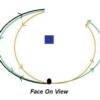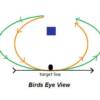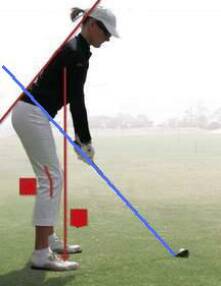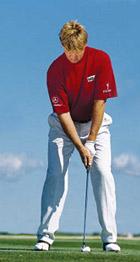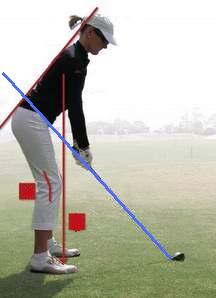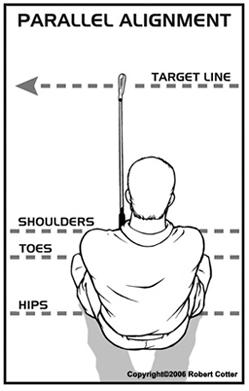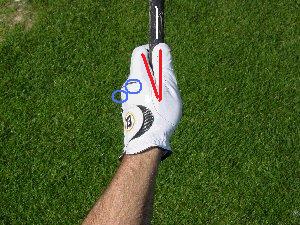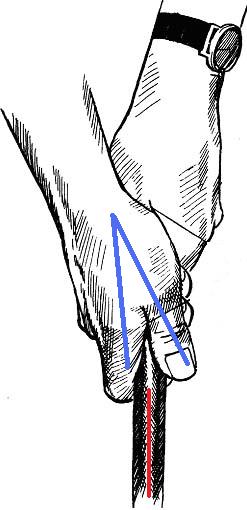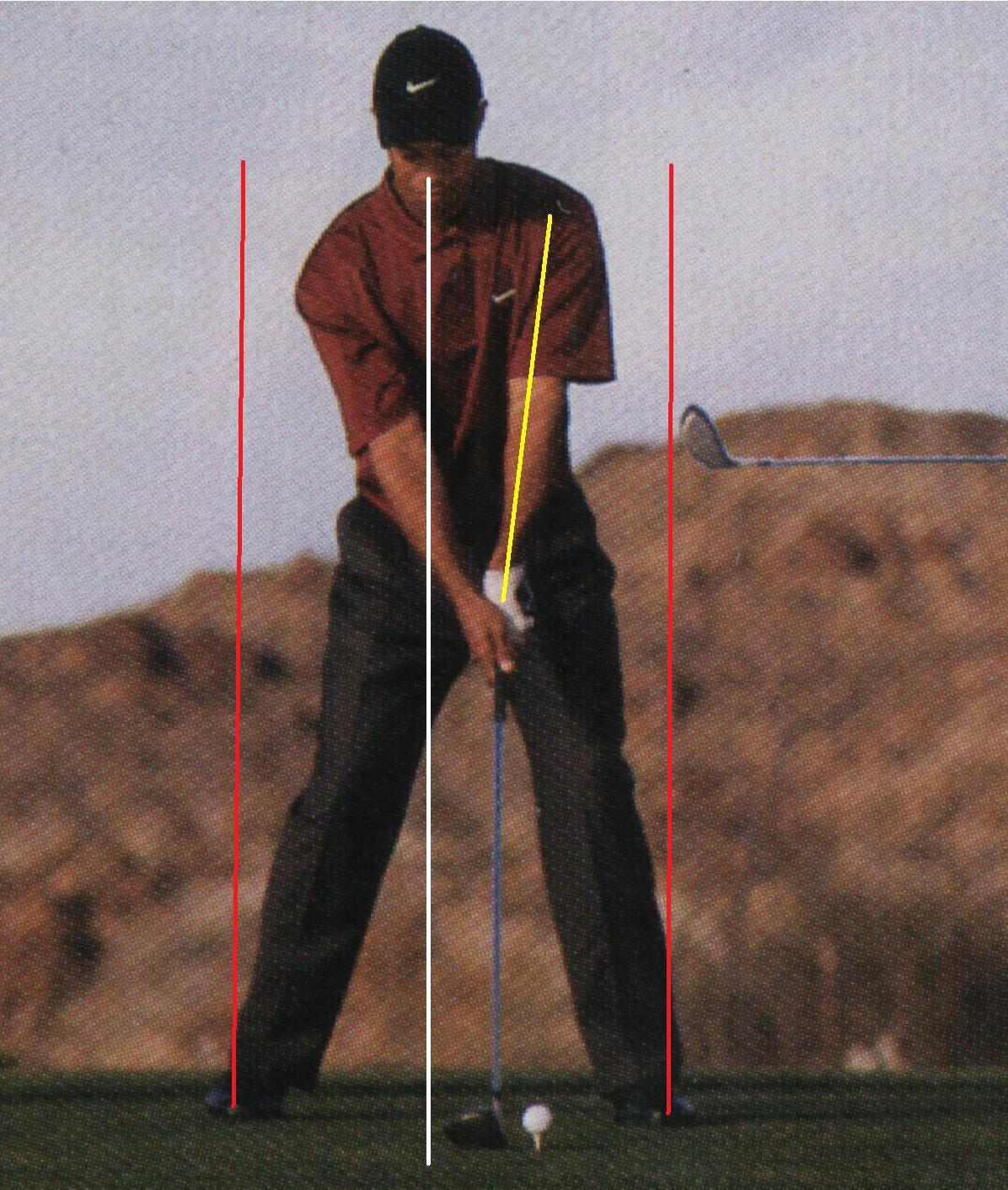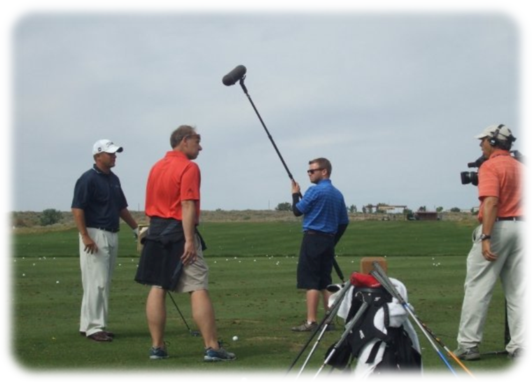Address/Set Up Position
What is the proper address/set up? You'll get a lot a answers that vary with this question. Your address position is VERY important to an efficient and repeating golf swing. Let me throw a comparison at you. I communicate to my students on our first lesson this... "If I were to ask you to get in your car and drive from Warren, PA to Los Angeles, CA without the use/aid of a map or gps equipment... I'm sure you would arrive in Los Angeles eventually. I'm also positive you wouldn't take the most efficient route or the same identical route over and over without some sort of map or gps equipment".
Very simply... your address/set up is your road map/gps to your golf swing. It's that important. Now, you understand the 45 second ritual the tour professionals incorporate into their routine on every swing. Their address/set up must be exact and must be perfect everytime they pull the trigger. The address position encourages proper golf swing habits and motions. Most of the time an instructor can determine the root cause of a malfunctioning golf swing to be in the address position. Very frankly, I expect and won't move forward in changing the golf swing until my student is in the correct address position for the On Plane Swing. Now that being said... adjusting your address position and making it correct will not fix your golf swing (usually not, anyways). An improper address position will have many compensations during the golf swing that will need to be removed.
What are the correct elements of address? grip, weight distribution, width of stance, ball position, posture, and alignment.
- Golf Grip (V's formed by the thumb and forefinger of both hands point towards right ear/right shoulder for right hand golfer)
- Width of stance (wider than shoulder width with driver)
- Weight distribution (50/50 on both feet)
- Ball position (inside left heel with driver)
- Posture (buttocks out, flat spine angle, arms hang naturally downward, legs with slight flex)
- Alignment (body lines parallel to target line)
Width of stance: The dynamic transfer of weight (weight shift) is extremely important to the 'On Plane' swing (and for all golf swings for that matter). The width of stance is your 'foundation' for weight shift. The correct width of stance supports weight shift during the back swing and the foward swing. Long story short, the foundation needs to be wide enough to support the proper weight transfer. This weight shift encourages back swing and forward swing arcs to become 'wide'. Wide swing arcs are the underlying differences between the 'On Plane' swing and other swing models, hence the importance of stance width during the 'On Plane' swing. The club in your bag which utilizes most weight transfer is your driver so ... the driver swing will have the widest stance. The shortest club in your bag is the wedge. The wedge will have the least amount of weight transfer (and there IS weight transfer with the wedge swing, albeit small), so the wedge will have the narrowest width of stance... shoulder width apart. Look at the pics above of Tiger and Ernie. Tiger is hitting a driver and his feet are wider than shoulder width apart. Ernie is hitting an iron (looks like a short iron) and his feet are slightly wider than shoulder width apart. These pictures can explain width of stance better than my words can. The other clubs in your bag are proportionately and equally different between these 2 clubs.
Weight Distribution: At the address position, your weight will be spread evenly 50/50 over both feet from the 'face on' view. Again, look at Ernie and Tiger in the above pictures. Pictures can do more justice than my words can. From the 'birds eye' view... your center of gravity will be on the balls of your feet as in the below picture of this anonymous lady professional.
Ball Position: The ball position will vary depending on the club being used. With the driver swing, the club will impact the ball at or near the very bottom of the forward swing arc. Tour players clubhead angle of approach at impact vary withing these parameters: -2 degrees to +3 degrees. The 'On Plane' swing has 'torso' dynamic weight tranfer towards the target during the foward swing arc. That being said, ball position with the driver should be at or around the left heel position (for right hand golfer). Iron play ball position will be (1) golf ball left of center of stance (right hand golfer). This will encourage a downward strike/angle of appraoch at impact.
THE NEUTRAL GOLF GRIP (FOR A RIGHT HAND GOLFER)
- Overlap grip for medium to large hands
- Interlock grip for small hands
- V's of forefinger and thumb of both hands point towards right ear/shoulder
- First 2 knuckles of left hand must be visible
- Left hand thumb is at 1:00 position
- Grip pressure with left hand is the last 3 fingers
- Right hand is a finger grip (club rests in the fingers not in the palm
- Pressure point of forefinger and thumb of right hand must be tight
Posture: Your posture is very important to a strong fundamental address position. It encourages and supports balance during the golf swing and a proper swing plane/arc/circle. Examine the lady golf professional's posture to the right. It is as close to perfect as one can get.
- Flat/straight spine angle (not rounded off at the shoulders)
- Legs slightly flexed
- Hips pushed back, buttocks out
- Arms hang naturally from shoulders downward
- Center of gravity is on balls of the feet
- Shaft angle is perpendicular to spine angle
Alignment: If your body alignment to the target is not correct your body will eventually create compensational moves and make the golf swing less efficient. The one thing you must understand.... the face of the club is the ONLY thing that points directly at the target (when hitting a normal golf shot). With the 'On Plane' swing, the body lines (toe line, knee line, hip line, forearm line, and shoulder line) all run pararellel to the target line (direction of clubface).
Grip: Is there (1) perfect grip for everybody? The short answer is no. I will tell you this...there is a perfect grip for every swing (and there are a lot of golf swings) and that is part of the instructor's responsibility to determie the correct grip for that particular individual. Hand positions on the club will greatly influence the look and shape of the golf swing. That being said... the 'On Plane' swing has certain characteristics that require certain grip attributes. I prefer my student's hand positions to be neutral (V's formed by the forefingers and the thumbs pointed to right eye/right ear for right hand golfer). The open face grip (V's formed by forefingers and thumbs pointing to nose or left eye for right hand golfer) or a closed face grip (V's formed by forefinger and thumb pointing to right shoulder or further right for right hand golfer) are not suitable for the 'On Plane' swing..
(double click to expand video)
2000
